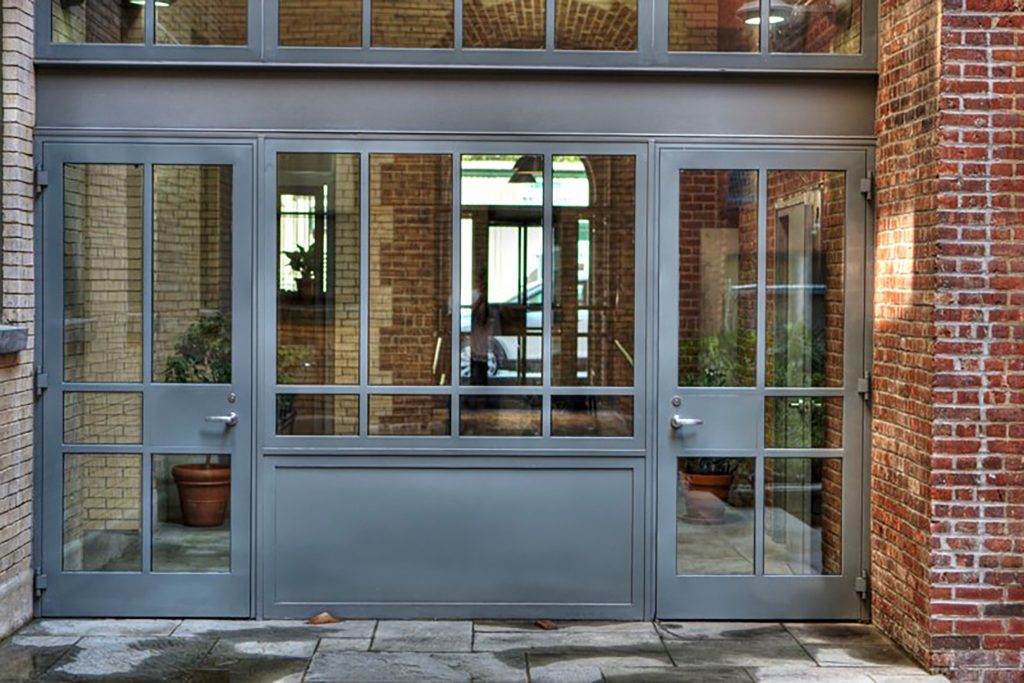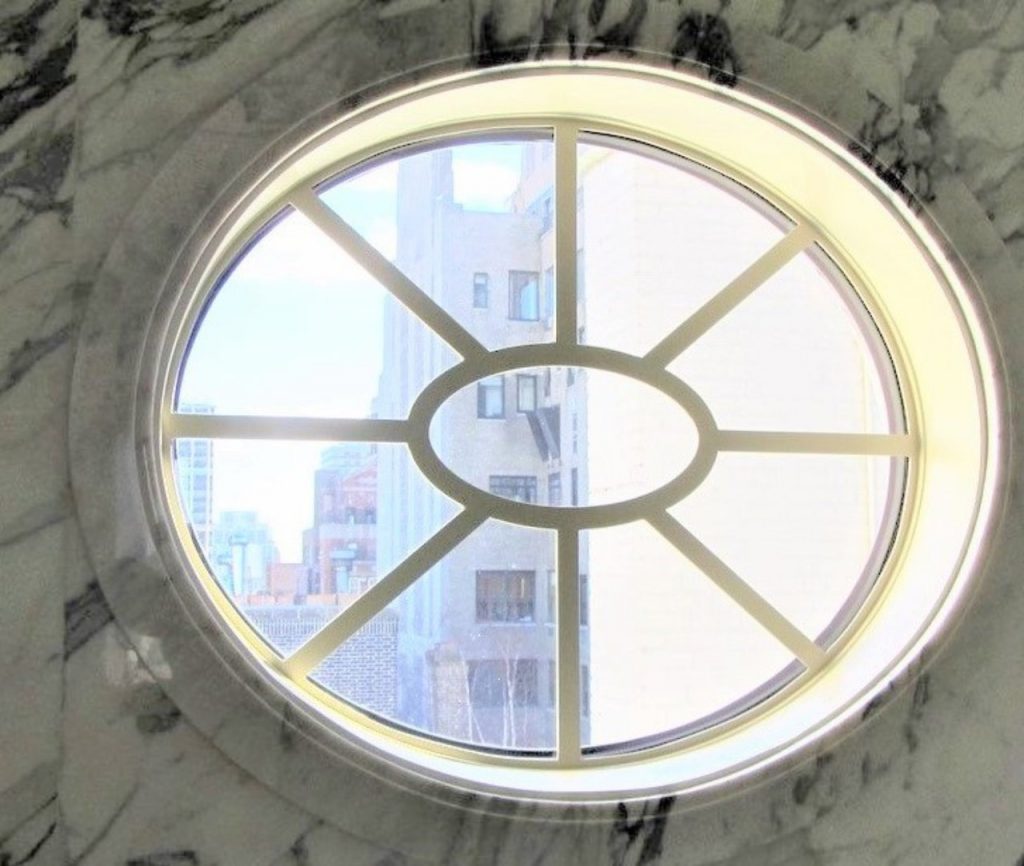In the world of architecture and construction, fire-rated steel windows are more than just an aesthetic choice—they are a critical component of fire safety.
For architects and builders, understanding the benefits of fire-rated glass and how it integrates into a building’s overall fire protection system is paramount. In this article, we will explore the top seven benefits of these windows, illustrating why they should be a go-to choice for your next project.

Understanding the Importance of Fire-Rated Windows
When it comes to designing a home or business, safety isn’t just a checkbox—it’s the foundation. And when it comes to safety, fire protection tops the list.
Fire-rated windows play a crucial role in ensuring the safety of occupants in the event of a fire.
These windows are not your run-of-the-mill glass products; they are meticulously designed to withstand high temperatures and prevent the spread of flames and smoke.
What Makes Fire-Rated Windows Different?
Unlike standard glass, which might shatter under the stress of high temperatures, fire-rated glass is built to last.
Think of it as the difference between a cotton shirt and a firefighter’s uniform. Both are clothes, but only one is designed to protect in extreme conditions.
Fire-rated windows are made from specialized glass types that hold up under the intense heat of a fire, providing a critical barrier that can prevent the spread of fire.
Why Architects and Builders Should Care
For architects and builders, incorporating fire-rated glazing is not just about compliance with building codes and regulations—it’s about ensuring the safety of every individual who steps inside your building.
The safety of the building should always align with its aesthetic appeal, and that’s where fire-rated steel windows shine. They offer the dual benefit of fire resistance and design flexibility, making them a valuable asset in any construction project.
Unmatched Fire Protection
When it comes to fire safety, nothing beats the protection offered by fire-rated steel windows.
These windows are the unsung heroes in the battle against fire hazards, standing as a bulwark between the interior of a building and the unpredictable dangers of a fire.
UL-Certified Protection
One of the first things to know about fire-rated windows is their rigorous UL certification.
Underwriters Laboratories (UL) puts these windows through the wringer, subjecting them to extreme conditions that replicate real-world fire scenarios.
Fire-rated glass must pass a series of tests, including the heat test, where it is exposed to temperatures as high as 1600°F, and the Hose Stream Test, which simulates the sudden cooling effects of water on hot glass.
These tests ensure that the glass is designed to hold up under the most severe conditions, providing crucial fire protection.
Performance in Real-World Conditions
In an actual fire, fire-rated steel windows don’t just sit there looking pretty—they perform. They stand up to the intense heat and stress of a fire, ensuring that flames and smoke don’t spread to other areas of the building.
Unlike regular glass, which might fail catastrophically, fire-rated windows maintain their integrity, giving occupants valuable time to escape and first responders time to arrive.
Consider this: in a multi-story building, a fire-rated window installed in a stairwell or hallway could be the difference between containment and disaster. It’s not just about keeping the fire out; it’s about keeping people safe inside.

Superior Durability and Longevity
Fire-rated steel windows are the workhorses of the construction world. They’re not just designed to protect against fire; they’re built to last through all kinds of environmental challenges.
The Strength of Steel
Steel is known for its strength, and fire-rated steel windows take full advantage of this. These windows are made from either cold-rolled or hot-rolled steel, both of which offer superior durability compared to materials like aluminum, wood, or vinyl.
Steel doesn’t warp, crack, or rot, and it can withstand impacts that would shatter other materials. In short, steel is tough, and when combined with fire-rated glass, it becomes a formidable barrier against fire and other hazards.
Resistance to Environmental Factors
Beyond fire, steel windows resist a host of environmental factors. They don’t corrode easily, especially when treated with galvanized coatings or powder finishes.
This makes them ideal for buildings in coastal areas or industrial environments where exposure to moisture, salt, or chemicals is a concern. Over time, the resilience of steel means lower maintenance costs and fewer replacements, making fire-rated steel windows a smart, long-term investment.
In a world where everything seems disposable, fire-rated steel windows are a testament to the power of building things to last. They’re the marathon runners of windows—designed to go the distance, no matter what the environment throws at them.
Design Flexibility and Aesthetics
Who says you can’t have it all? With fire-rated steel windows, you don’t have to choose between safety and style.
These windows offer unparalleled design flexibility, allowing architects and builders to create spaces that are both safe and visually stunning.
Customizable Design Options
One of the standout features of fire-rated steel windows is their customizability. Whether you’re working on a modern skyscraper or a historical restoration, these windows can be tailored to fit your vision.
They come in a variety of styles, from fixed and operable windows to French doors and beyond. You can choose from different glazing options, finishes, and configurations, ensuring that your windows and doors perfectly complement the building’s design.
Narrow Sightlines with High Aesthetic Value
Another advantage of fire-rated steel windows is their ability to offer narrow sightlines. Steel is incredibly strong, so less material is needed to hold the glass in place.
This results in slim, sleek profiles that maximize natural light and create a clean, modern look. Imagine a wall of fire-rated windows in a high-end commercial building—allowing light to flood in while providing top-notch fire protection. It’s beauty with a purpose.
Architects love steel for its versatility, and when combined with the benefits of fire-rated glass, it’s a match made in heaven.
Whether you’re aiming for a minimalist aesthetic or a bold architectural statement, fire-rated steel windows provide the perfect canvas.

Energy Efficiency and Thermal Performance
In today’s eco-conscious world, energy efficiency is more important than ever. Fortunately, fire-rated steel windows aren’t just strong—they’re also thermally efficient.
Thermally Broken Steel for Superior Insulation
One of the key features of fire-rated steel windows is their thermally broken frames.
This means that the steel frame is divided by a thermal barrier, which reduces heat transfer and improves insulation.
In simpler terms, these windows keep the heat where you want it—inside during the winter and outside during the summer. This not only makes for a more comfortable building but also helps reduce energy costs.
Contribution to Green Building Certifications
Installing fire-rated steel windows can also contribute to your building’s green credentials.
Many of these windows are made from recycled steel and are designed to meet or exceed energy codes like the NYC Energy Conservation Code (NYCECC).
By choosing fire-rated windows with excellent thermal performance, you’re not only protecting your building from fire—you’re also helping to protect the planet.
In the world of architecture, where sustainability and fire safety are both top priorities, fire-rated steel windows hit the sweet spot.
They’re proof that you don’t have to compromise on energy efficiency to achieve the highest levels of fire protection.
Enhanced Security and Safety
When you think of fire-rated windows, fire protection might be the first thing that comes to mind. But did you know that these windows also offer enhanced security?
Security Beyond Fire Protection
Fire-rated steel windows are incredibly strong, which makes them resistant to forced entry and other security threats.
Unlike regular glass, which can be easily broken, fire-rated glass is much tougher. It’s designed to hold up under extreme conditions, making it an excellent choice for buildings that require high levels of security.
Whether it’s a school, hospital, or office building, fire-rated windows provide peace of mind knowing that they can stand up to more than just fire.
Compliance with Building Codes
Another important aspect of fire-rated windows is their compliance with building codes.
These windows are designed to meet or exceed the requirements of codes like the International Building Code (IBC), which specifies the use of fire-rated glass in certain areas of a building, such as stairwells and escape routes.
By installing fire-rated steel windows, you’re not just meeting these requirements—you’re exceeding them, ensuring that your building is as safe as possible for its occupants.
Security and safety go hand in hand, and with fire-rated steel windows, you get the best of both worlds. They’re like the Swiss Army knife of windows—versatile, reliable, and built to handle whatever comes their way.
Cost-Effectiveness and Value Over Time
While fire-rated steel windows might have a higher upfront cost than some other options, they offer significant long-term value. Let’s break it down.
Long-Term Cost Savings
First and foremost, fire-rated steel windows are incredibly durable. They’re resistant to a wide range of environmental factors, including corrosion, impact, and extreme temperatures.
This means they require less maintenance and have a longer lifespan than other materials. Over time, this translates to lower maintenance costs and fewer replacements, which can add up to significant savings.
Increased Property Value
In addition to cost savings, fire-rated steel windows can also increase the value of a property.
In today’s real estate market, buyers and tenants are increasingly looking for buildings that offer both safety and aesthetic appeal. By installing fire-rated windows, you’re not only improving the safety of the building—you’re also enhancing its overall value.
For example, a commercial building with fire-rated steel windows will likely attract more tenants who value safety and security.
Similarly, a residential property with these windows could command a higher price on the market. In both cases, the investment in fire-rated windows pays off in the long run.
In the world of architecture and construction, value isn’t just about the initial price tag—it’s about what you get in return.
And with fire-rated steel windows, the return on investment is clear. They’re a smart choice for anyone looking to balance cost with quality, safety, and design.
Conclusion: Why Fire-Rated Steel Windows Are the Optimal Choice
In summary, fire-rated steel windows offer a unique combination of fire protection, durability, design flexibility, energy efficiency, security, and long-term value.
They are an essential component of any building’s fire protection system, and they provide a host of other benefits that make them a smart choice for architects and builders alike.
Whether you’re working on a new construction project or a renovation, consider the many advantages of fire-rated steel windows. They’re not just a product—they’re a solution to multiple challenges that architects and builders face every day.
From enhancing fire safety to improving the overall value and appeal of a building, fire-rated windows are an investment in the future.
So, the next time you’re specifying windows for a project, remember: with fire-rated steel windows, you can have it all—safety and protection, beauty and durability. It’s the ultimate win-win for your building and its occupants.



